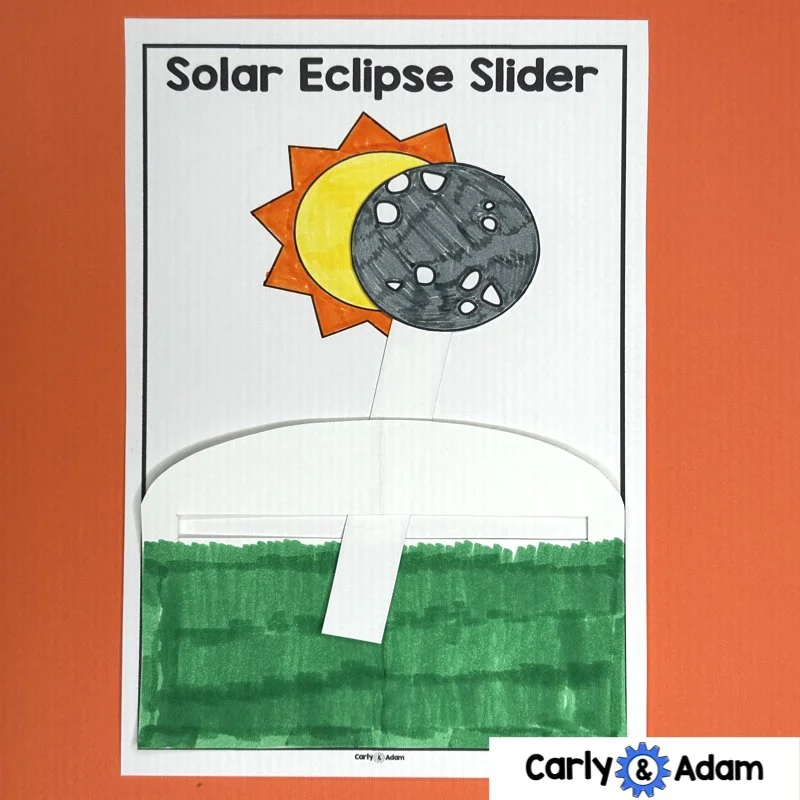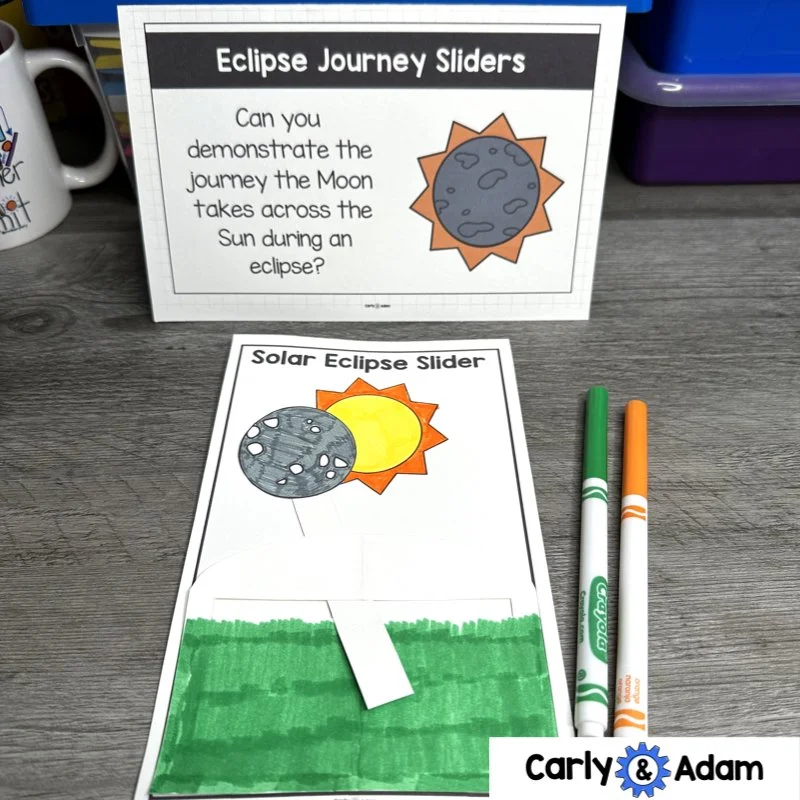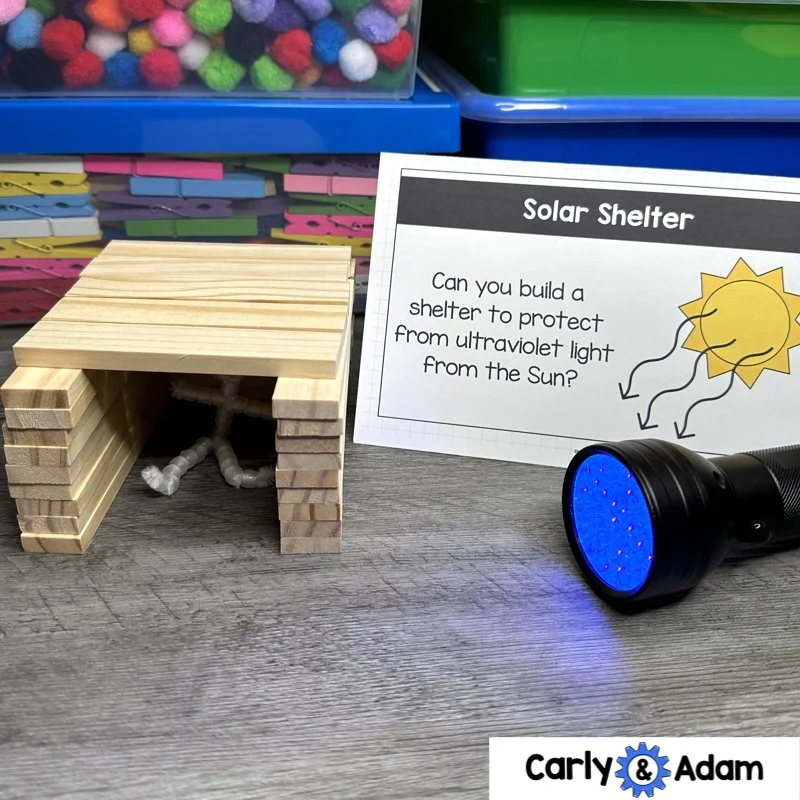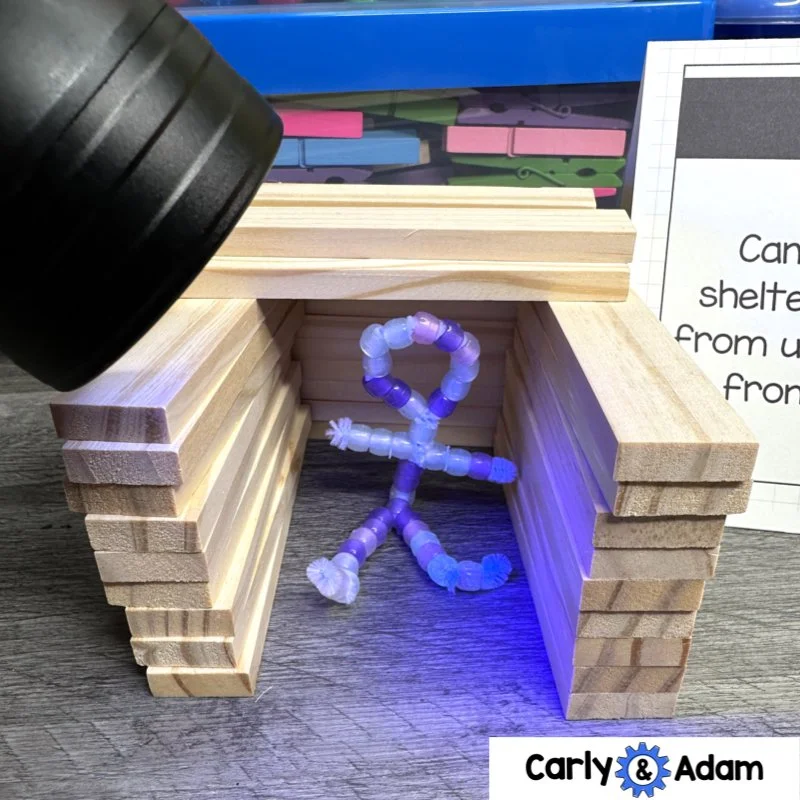Solar Eclipse STEM Centers and Activities
Don’t just learn about the solar eclipse, invite your students into an interactive exploration of the wonders of the universe through STEM!
STEM Centers offer students a hands-on experience where they get to witness the magic of a solar eclipse in real time (whether through tools like solar eclipse glasses or a pinhole viewer or through the magic of augmented or virtual reality). Need some solar eclipse center ideas? Check out the following suggestions:
7 Solar Eclipse Activities:
1. Make a Solar Eclipse Flip Book
2. Create Sun Print Art (Cyanotypes)
3. Explore the Sun Using Augmented or Virtual Reality
4. Recreate the Path of a Solar Eclipse Using Play Dough
5. Make a Solar Eclipse Slider
6. Build a Solar Shelter to Protect from UV Rays
7. Create a Solar Eclipse Pinhole Projector
The celestial dance of the sun and moon during a solar eclipse is not only a fascinating astronomical event but also a fantastic opportunity for hands-on learning. Here, we delve into creative and engaging activities that bring the concept of a solar eclipse to life in the classroom.
These activities are perfect for elementary school teachers looking to inspire their students with the wonders of the cosmos through STEM (Science, Technology, Engineering, and Mathematics) education.
1. Make a Solar Eclipse Flip Book
A flip-book is a fantastic way to visualize the dynamic process of a solar eclipse. By creating a sequence of images that show the moon passing in front of the sun, students can flip through the pages to see the eclipse in action.
This activity not only teaches about the phases of an eclipse but also encourages artistic skills and storytelling through pictures. There are several different options included for differentiation. For example, younger students can color, cut out, and order the already drawn images of the eclipse. While older students can cut out the images of the moon and glue them where they go during each stage of the eclipse before coloring and assembling the flip book.
2. Create Sun Print Art (Cyanotypes)
Cyanotypes, a photographic printing process that produces a cyan-blue print, can be a magical way to learn about the sun and capture the essence of sunlight. Using cyanotype paper, students can place objects on the paper and expose it to sunlight, creating beautiful impressions of the items blocked by the sun's rays. This activity is not only artistic but also teaches about the properties of light and ultraviolet radiation.
3. Explore the Sun Using Augmented or Virtual Reality
Leveraging technology, a virtual reality (VR) activity can transport students to the vast expanse of space. Using apps like SkyView and Merge Explorer, students can explore galaxies, constellations, and witness a solar eclipse within a virtual environment. This immersive experience makes learning about astronomy captivating and memorable.
If you do not have access to Merge Cubes you can download a free paper cube: https://mergecube.com/paper-pdf.
4. Recreate the Path of a Solar Eclipse Using Play Dough
Play dough isn't just for sculpting figures; it's also a great medium for modeling astronomical events. Students can use different colors of play dough to represent the sun, moon, and Earth, creating models of the various stages of a solar eclipse. This tactile activity aids in understanding the spatial relationships and movements of celestial bodies.
5. Make a Solar Eclipse Slider
A hands-on activity, the solar eclipse slider, allows students to manually simulate the moon's transit across the sun. By moving a paper moon across a slider, they can visually comprehend how a solar eclipse occurs from a top-down perspective. This activity combines hands-on creating with scientific concepts, making the learning process engaging and interactive.
6. Build a Solar Shelter to Protect from UV Rays
Understanding the importance of protecting ourselves from the sun's ultraviolet rays is crucial, especially during an eclipse. In this activity, students are challenged to build a shelter that can block UV light.
To complete this activity students will need UV-sensitive beads, pipe cleaners and a UV flashlight to test their creations. Students will build a person or creature out of UV beads and pipe cleaners (Note: If you are short on time these can be created ahead of time.)
Students will build a structure using KEVA Planks or other nonconsumable building materials that will keep their person or creature safe (have it not change colors) when the flashlight shines down on the structure.
This project encourages problem-solving and awareness of sun safety.
7. Create a Solar Eclipse Pinhole Projector
Safety first! Watching a solar eclipse directly can be harmful to the eyes, so creating a pinhole projector out of a cereal box is a safe and fun way to observe the event. Students can learn about light and optics as they assemble their projectors and use them to view the eclipse's projection on a piece of paper inside the box.
These hands-on activities not only illuminate the concept of a solar eclipse but also foster a deeper appreciation for the wonders of our universe. By engaging in these projects, students can grasp complex astronomical concepts in a fun and interactive way, making science education both enjoyable and impactful.
The best thing about the Solar Eclipse STEM Centers is that they can be used to teach about other astronomy concepts as well including the solar system, constellations, moon phases, and more!
Teach your Students about the Solar Eclipse, Moon Phases, Constellations, the Solar System, and More with our Solar Eclipse and Astronomy STEM Centers!
Have more questions or need additional resources?
You can get all 300+ STEM Challenges by Carly and Adam as part of the STEM Teachers Club Membership. Save $5 on your first month using coupon Code: CarlyAndAdamBlog.
We hope you have found this blog post helpful. To stay connected with Carly and Adam's teaching tips and classroom freebies be sure to follow us on Facebook, Pinterest, Teachers Pay Teachers, and subscribe to our blog!











